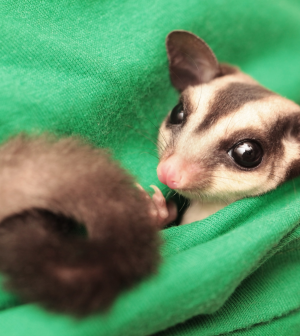Thinking about adopt a sugar
glider as a pet? You need to know these five facts before taking in sugar
gliders as pets. Read on and be on the know.
You don’t have to return from your next trip to the pet
store with something like a goldfish or a hamster. Those animals make great
pets, but sometimes we have to get outside of the box a little. Many people
stick to traditional animals because they’re well-understood and people have
established ways of taking care of them. Going a little outside of what’s
normal may prove to be a little challenging at times.
One animal that’s a little outside the box is the sugar
glider. The sugar glider is an excellent pet and companion. We’re going to talk
about how to keep sugar gliders as pets in this article, giving you some idea
as to what they are how to prepare to own them.
How to Keep Sugar Gliders as Pets
Before you make the decision to purchase a sugar
glider, keep the following few points in mind. First, they live
somewhere from 10 to 14 years. That’s about the same as the average dog you’d
take home. You’ll want to keep that timeframe in mind as you consider the
reality of making the purchase.
Sugar gliders are incredibly cute and are easy to bring home
on a whim. That said, it’s important to learn how to bond with a sugar glider because your
connection to the animal will be its most important relationship. You will
break the animal’s heart if it needs to switch homes or you find that you don’t
have the resources or time to take care of it. Additionally, they’re
tree-dwelling, mostly nocturnal animals. They’ll sleep for most of the day but
be pretty active at night. That means you might have to slightly adjust your
schedule to allow more time with the animal.
Finally, note that sugar gliders can fly. Well, it’s more of a “glide.” Not only are they
adorable marsupials, but their webbed wings allow them to glide from tree to
tree or sofa to sofa.
Caring Requirements
Sugar gliders should be housed with a cage that is as big as
you can manage. The bigger the better. These creatures evolved to have space to
glide around and make their way around large spaces. It’s also important to
provide a number of perching areas, hammocks, and a decent bedding location.
You can certainly take your sugar glider out of the cage, but make sure to keep
a close eye on it when it’s around children or other animals.
Kids and animals may be too rough on your glider and injure
it. When it comes to diets, it’s best to use one of the commercial products on
the market. These are specifically designed to meet sugar gliders’ nutritional
requirements. In addition to that food, you should give your pet fruits,
vegetables, and bugs when possible.
Taking in sugar gliders as pets is an extremely fun and
rewarding idea. We’re here to help you move forward with the process of
learning and preparing. Explore our site for more insight into all of your pet
questions.



















You must be logged in to post a comment Login